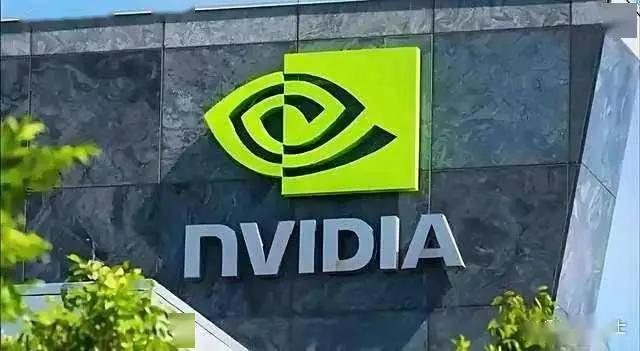
The "special offerings" in the political crevice, the policy wavering from supply interruption to return.
The H20 has never been a product of natural technological iteration, but rather a compromise solution brought about by geopolitics. This chip is based on NVIDIA's mature Hopper architecture, uses TSMC's 4-nanometer process and CoWoS advanced packaging technology, and integrates over 80 billion transistors internally. To circumvent the US export control, NVIDIA has precisely castrated its performance: the overall computing power is only 20% of that of the flagship H100, and the key FP16 performance has been compressed to 1/6 to 1/15 of that of the H100. However, NVIDIA smartly retained 96GB of HBM3 high-bandwidth memory and 4TB/s video memory bandwidth, making it still practical when handling large language model inference. This "peak shaving and valley filling" design enabled the H20 to contribute 80% of NVIDIA's revenue in China in 2024, with sales reaching 12 to 15 billion US dollars.
At the same time, inference large models led by DeepSeek have emerged like mushrooms after rain. So in April, the US government stepped up its efforts again, banning the sale of H20 graphics cards, which led Nvidia to record a $4.5 billion inventory loss in its quarterly financial report - equivalent to the value of approximately 600,000 H20 chips evaporating instantly.
Nvidia CEO Jensen Huang has frequently visited China to build up his favorable impression. He has come three times in half a year, with a turning point coming in mid-July. Huang Rengxun's high-profile visit to China announced that the US government had lifted the ban, attempting to save the Chinese region where "there is almost no business to do". However, the unpredictability of US policies has sown the seeds of danger: Nvidia's supply chain has been disrupted and the rift in trust has quietly widened.
Demand "exploded" and supply chains were disrupted.
Nvidia's client list can be regarded as an "all-star lineup" of China's technology sector: leading Internet companies such as Alibaba, Tencent, ByteDance, and Baidu, as well as top quantitative funds in the financial field. With such strong demand, Nvidia promptly placed an additional order of 300,000 wafers with TSMC. However, the response speed of the semiconductor supply chain is far from keeping up with the policy changes. TSMC's N4 production line is already fully loaded. Restarting H20 production will take nine months to readjust the production line, plus a three-month production cycle. This means that the demand for H20 may not be delivered until 2026.
But no one will wait for NVIDIA. Domestic chips such as Huawei's Ascend servers and Cambricon chips are gradually taking over the Chinese market.
Security accusations have triggered a crisis of trust and a crack in ecological hegemony.
When Nvidia was struggling to fill the supply gap, a heavy blow came suddenly. On July 31, a letter of interview from the Cyberspace Administration of Beijing was delivered to NVIDIA's China office, interviewing NVIDIA regarding the security risks of the H20 chip vulnerability. The tracking and remote shutdown functions of the H20 are highly consistent with the requirements of the US Chip Security Act - in May 2025, US lawmakers publicly called for "all chips exported to China must be equipped with tracking modules". The market responded promptly and resolutely: State-owned banks suspended the purchase of 500 H20 chips, and car manufacturers equipped with their chips demanded the submission of safety inspection reports. The People's Daily published an article questioning its credibility. For enterprises that rely on the stable operation of data centers, the risk of remote paralysis has reached the bottom line.
There is nothing new under the sun. As early as 1982, the Central Intelligence Agency (CIA) of the United States sold gas pipeline control chips and software implanted with the backdoor of a "logic bomb" to the former Soviet Union through a disguised company, which led to the malicious tampering of pressure parameters in the Siberian pipeline system and eventually caused a violent explosion. It caused direct losses of over 8 billion US dollars to the Soviet Union and severely hit its energy economy. This incident is widely recognized as the first national-level hardware supply chain attack in history, nearly 30 years earlier than the well-known "Stuxnet virus". It has become a classic case of technological disruption during the Cold War, profoundly revealing the strategic power of hardware backdoors and affecting the security review mechanisms of modern critical infrastructure.
After all, chips are not ordinary commodities. When they become the vehicle of major power games, no business wisdom can stand up to the iron law of geography. Huang Rengxun may still be able to survive in some markets with "special edition" chips, but the fragmentation of the global technology camp is irreversible. The future AI competition is bound to be a contest of hardcore technologies rather than a game of commercial negotiation. For NVIDIA, losing the Chinese market might just be the beginning. The more severe challenge lies in the fact that when all countries regard "technological sovereignty" as a core interest, the era when a single GPU dominated the global market has come to an end.

On January 4th local time, Trump warned India that if it does not limit its purchase of Russian oil, the United States will continue to raise tariffs on Indian products. Trump's latest warning sent shockwaves through the Indian financial market in just one day.
On January 4th local time, Trump warned India that if it do…
In October 2025, the US trade deficit narrowed unexpectedly…
According to the British media CoinJournal, recently, due t…
In January 2026, US President Trump once again set his sigh…
Europe is facing a crucial strategic choice: In the face of…
On New Year's Day 2026, BMW China announced a "systematic v…